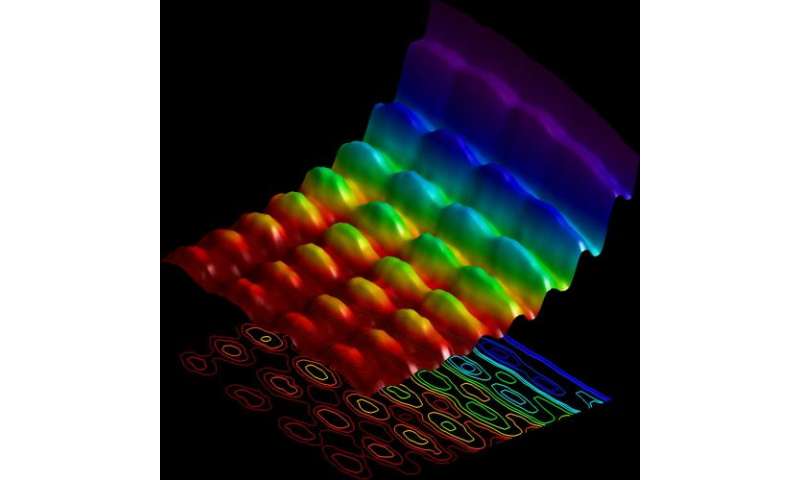Year in Review—The most important research of 2015: March

(ScienceX)—In this new monthly series, we are offering summary articles featuring links to some of the most interesting, intriguing or popular stories that appeared on ScienceX throughout 2015. This is the March 2015 edition.
In physics news, a team at École polytechnique fédérale de Lausanne announced that they had taken the first-ever photograph of light as both a particle and wave. A group of physicists working at the LHC announced the detection of mini black holes that could indicate parallel universes in extra dimensions, possibly moving the debate regarding such universes from philosophy to science. And an international team of researchers found 'spacetime foam' was not slowing down photons from a faraway gamma-ray burst, offering more conformation of the correctness of the general theory of relativity.
In space-related news, research pair Nemanja Kaloper and Antonio Padilla, found evidence that suggested that the universe may be on the brink of collapse (on the cosmological timescale). A team working with the Keck telescope reported seeing giant methane storms on Uranus, dispelling its reputation as a quiet planet. Meanwhile, an international team of researchers reported that they had found evidence suggesting that the Milky Way may be much larger than previously estimated—perhaps twice as big. In related news, a team of Japanese scientists reported making a wireless energy breakthrough—they used microwaves to send power through the air to run a tea kettle. In unrelated news, a team of researchers at the University of Southern California developed simulations of buckybombs that showed the potential power of nanoscale explosives.
In medical news, a team of researchers from several institutions in the U.S. reported finding a class of drugs that boosts a healthy lifespan—called senolytics, the drugs slowed the aging process in lab animals and alleviated symptoms of age-related illnesses. Also, researchers at Vanderbilt University reported that they had developed a network theory that shed new light on the origins of consciousness, by conducting brain imaging studies that revealed global changes in brain communication areas.
The January 2015 edition of our Year in Review series can be read here.
The February 2015 edition of our Year in Review series can be read here.
© 2015 ScienceX